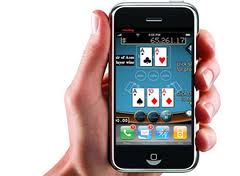Bankroll Management Strategy
Bankroll Management is an essential aspect of any good poker strategy. In fact, proper bankroll management is generally what separates a "problem" gambler from a "professional" gambler, along with a few other facets, like experience, observance and patience.
A good bankroll management strategy relies very much on the ability to maintain discipline. The poker player must know how much he can afford to lose, make wise decisions, and never, ever wager more than his bankroll supplies.
Stocking the Bankroll
The first thing any good poker player needs to know is how to stock their bankroll. First and foremost, your bankroll should be comprised of "extra" money only. Create a "poker fund" and continue adding to it as you can.
The money you drop on the felt should never come from your bills, gas or grocery money. These are known as "survival funds". Do you want to survive, or play poker? Most would choose both; hence the need for a separate fund for each.
How Much is Enough?
The size of your bankroll should directly effect the types of poker games and stakes you play. If you enjoy Fixed Limit poker, you won’t need as large a bankroll as you will for Pot Limit and No Limit poker games. And of course, your bankroll needs to be able to last throughout the stakes you choose to play.
The chart below will define the best bankroll size for each game type, with examples for edifice.
Fixed Limit: 100x Big Blind
Pot Limit: 400x Big Blind
No Limit: 400x Big Blind
Let’s say you want to enter a $5/$10 FL Hold’em game. The Big Blind is $10, and from the chart above, we see that we need 100x the Big Blind to reasonably enter this poker game. Your bankroll would need to be at least $1,000 in order to follow proper bankroll management strategy.
Now let’s try working it in reverse. What if you have only $200 in your poker bankroll? Divide $200 by 100, and you get $2. The highest stakes, FL game you should be playing is $1/$2.
We use the same equations for PL and NL games, but dividing the Big Blind by 400. With a $200 bankroll, your max stakes should be $.25/$.50.
One Bankroll, So Many Games!
In a live casino poker room, it’s easy enough to take a single bankroll, convert it to chips at the cashier, and take to the tables. This may not be the best strategy, but it is very common, as most people don’t make it to the casino on a regular basis. For online poker fans, however, the ability to access so many poker games any time of any day, makes it less practical to bring the entire bankroll to a single poker table.
When playing online poker, proper bankroll management strategy tells us to bring, at most, 1/10 of your entire bankroll to a single poker game. One wrong decision, one hasty move, and your entire bankroll could be sucked out from under you. You can’t expect to come out on top of every cash game, so instead, we use odds and probabilities in bankroll management, just as in your actual poker play.
At a full table of 10 players, assuming all are of the same basic skill level, you can safely assume that you will win 1 out of 10 tables. Therefore, by taking 1/10 of your bankroll, you are expecting to break even. If you trump that up with a good poker strategy, your odds of winning should increase, thereby increasing your odds of making a profit, rather than breaking even.
Knowing When to Quit
Finally, but ever so importantly, is the ability to stop when your bankroll no longer supports your desire to play poker. It is easier said than done, but with strict discipline, a poker player should always know not to go beyond his bankroll. Once it is depleted, you are done. Walk away. Never pull funds from any other source than your poker fund. Do not assume you will win in just a few more hands, and then you’ll quit. It never works out that way. Never chase losses. Simply concede defeat and build a new bankroll. The poker tables will be open another day.



